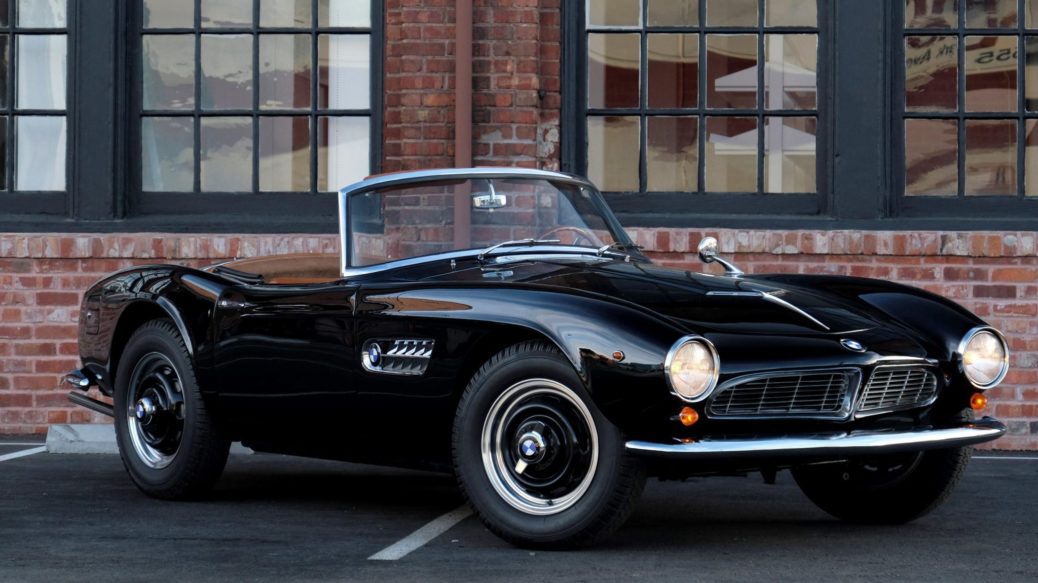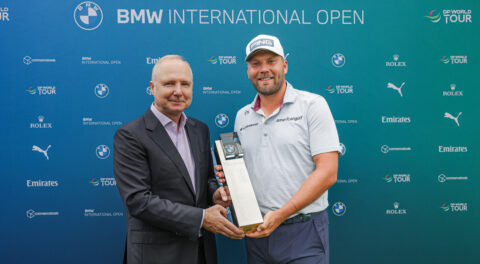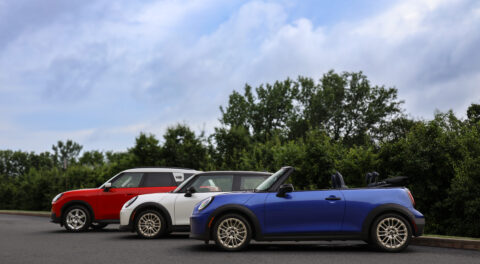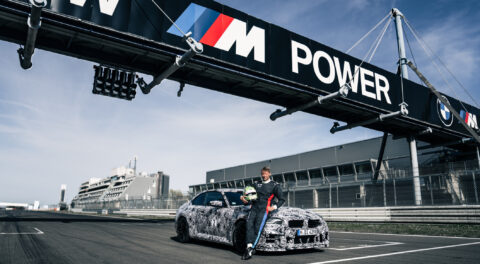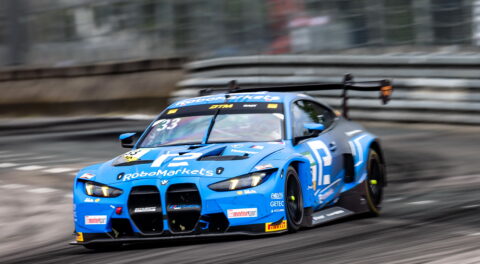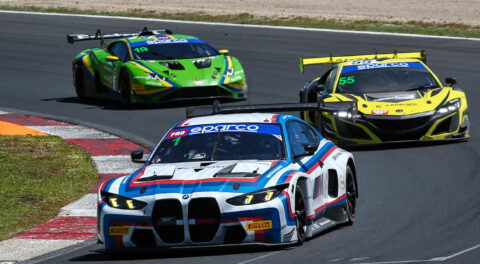The most valuable BMW is the 507. Manufactured—largely by hand, and on a chassis-by-chassis basis—from 1956 until 1959, just 252 examples resulted, and the aluminum-bodied roadster was clearly the pinnacle of what BMW was selling at the time. This was the lead up to the company finding itself on the verge of financial ruin and nearly being acquired by Mercedes-Benz, which was the result of manufacturing low-volume, high-dollar models—known collectively as the Baroque Angels—which rode on perimeter frame underpinnings with BMW’s corporate straight-six (or the new all-aluminum V8) supplying power. The 507 was the most advanced and expensive model to emerge from this often overlooked period of BMW history, so much so that it essentially broke the company, to put things in the most unadulterated sense.
The online specialty vehicle auction hub that is Bring a Trailer has hosted nearly 40,000 sales from its inception as an auction platform back in 2014, but the 1957 BMW 507 Series II currently up for bid is the very first of its kind for the site. Available through a premium listing which includes a bidding period longer than the typical seven days, 507 chassis number 70077 is lot number 39,959 for Bring a Trailer, which illustrates just how momentous an occasion it is to see such a remarkable automobile essentially up for grabs on an online auction site.
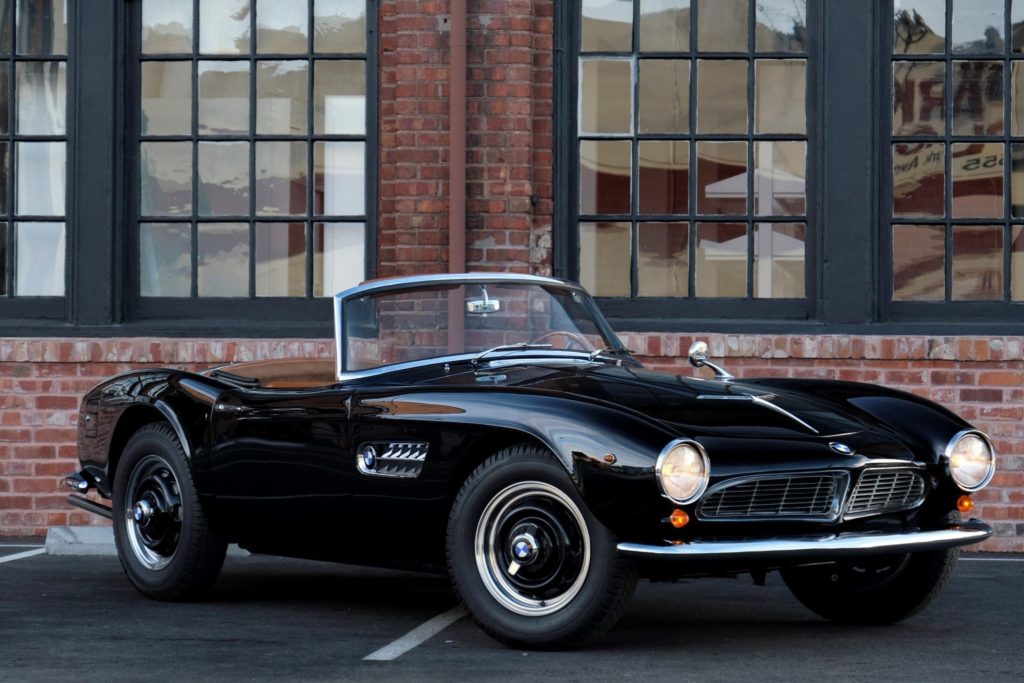
There are no ordinary BMW 507s. Just as is the case with other low-production, highly specialized BMW models, like the E36 M3 LTW, for example, or the 3.0 CSL, a given specimen of one of these cars is likely to have its own unique personality and set of qualities when compared with its stablemates and production line siblings. Having been manufacturing during the sports car boom that occurred during the 1950s and early 60’s, however, the bespoke nature of each of the remaining BMW 507 chassis out there (it’s said there are around 200 left) is highly varied. This was the era of experimentation and trial by fire on the racing circuit, with technologies like disk brakes, multi-carburetor induction, and more coming to the forefront, but with limitations in the form of suspension and tire technology, to name a few.
The story of how the 507 came to be can’t be ignored either. According to the record, BMW had been planning a postwar successor to the 328 since at least 1946, but it was Max Hoffman, the posthumously famous East Coast-based European car importer instrumental in helping establish brands like Volkswagen, Mercedes-Benz, Porsche, and BMW in the U.S. who would play a pivotal role in making the 507 a reality. Hoffman was key thanks to his insisting that Albrecht von Goertz, the Raymond Loewy understudy, design the V8 roadster. As things would play out, the 507 ended up being even more advanced than the Mercedes-Benz 300SL which it slotted almost directly against, boasting an all-aluminum body and engine compared with the partial steel construction of the 300SL. The Mercedes did come with the advantage of mechanical fuel injection, and 29 aluminum-body examples were made, but 507 was originally supposed to seize opportunity and take of the expanding American sports car market, not to initiate a technological space race with Mercedes.
When it arrived in the U.S. with an initial MSRP of around $9,000 (equivalent to roughly $86,000 at the time of this writing), the 507—intended to be produced in annual volume of at least 1,000 units—was a hard sell. The price would balloon to $10,500 by the end of production with the inclusion of a hardtop, or close to $100,000 today. BMW’s losses piled up, with a write down of 15,000,000 Deutschmarks recorded for 1959—the final year of 507 production. You probably know the rest of the story as far as BMW is concerned; Herbert Quandt provided an injection of capital, and the company reinvested itself as a producer of cheaper, more affordable models, with a certain sporting nature to them.
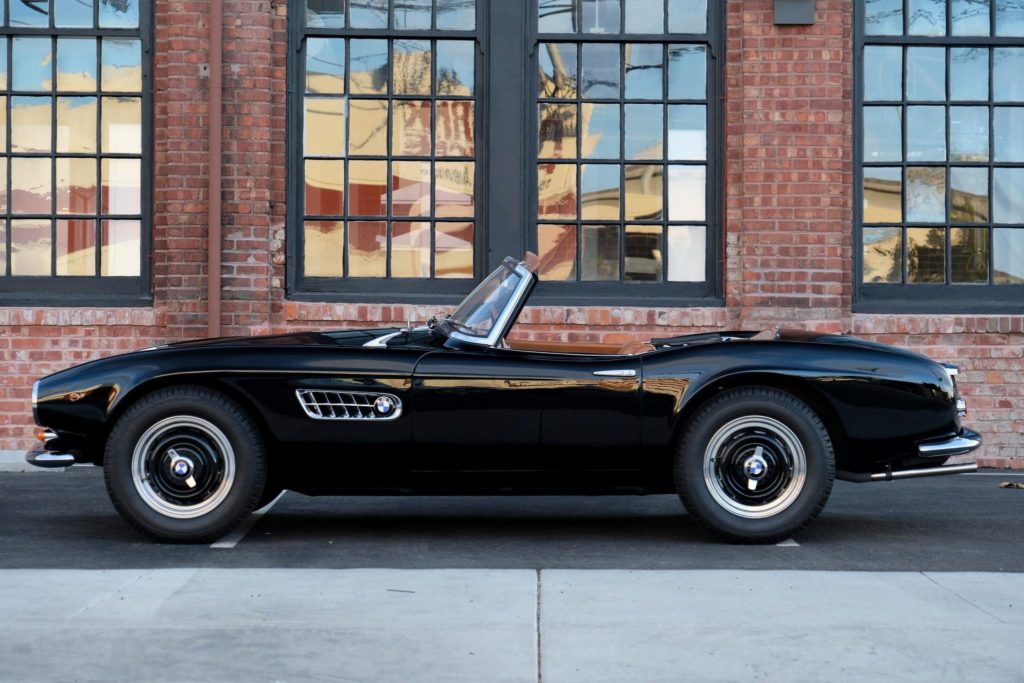
Any BMW 507 is special and noteworthy, and there are a few rather unique qualities about chassis number 70077, which currently graces the electrons of Bring a Trailer. Completed on September 17 1957, 70077 can be considered a relatively early Series II example which signifies the inclusion of a handful of benefits such as a relocation and downsizing of the 29-gallon fuel tank from the passenger compartment to the trunk where it could hold 17.4 gallons when integrated around the spare well. Although just 34 first-series examples were made, making them significantly rarer, the more usable Series II examples have set the standard at auction.
Chassis number 70077 is accompanied by a BMW Mobile Tradition (now BMW Group Classic) certificate which confirms that it is one of just fifteen units of the 507 to be finished in black from the factory. Other specifications include a color-matched hardtop, which was optional, along with knock-off wheels, and Dunlop disk brakes, although they’re only on the front, unlike the unique four-wheel setup on the John Surtees car, which has a chassis number ten digits before the black example currently up for bid on Bring a Trailer. Email correspondence with BMW Group Classic Head of Service Thomas Tischler confirms that the disk brakes and Rudge wheels were original equipment for 507 70077 when it was new.

Never the subject of a full restoration, the 507 at hand is a mix of new and old, with some things having been changed or modified along the way, and others left the same. The, “butterscotch” leather interior is striking in terms contrast, but is the result of a reupholstering job that took place in Italy before the car was imported to the U.S. at the turn of the millennium, around the same time the car was repainted. Carpeting in the driver’s side footwell shows wear, while a vintage-style roundel has been affixed to the glovebox door. A block-off panel is visible where an original equipment Becker radio was once fitted, while the purists and aficionados among us will likely be able to pick out a number of other items, like the shift boot and wood-rimmed Nardi steering wheel, the latter of which takes the place of the original quad-spoke design. The original hardtop is included, and was treated to a new headliner in 2005.
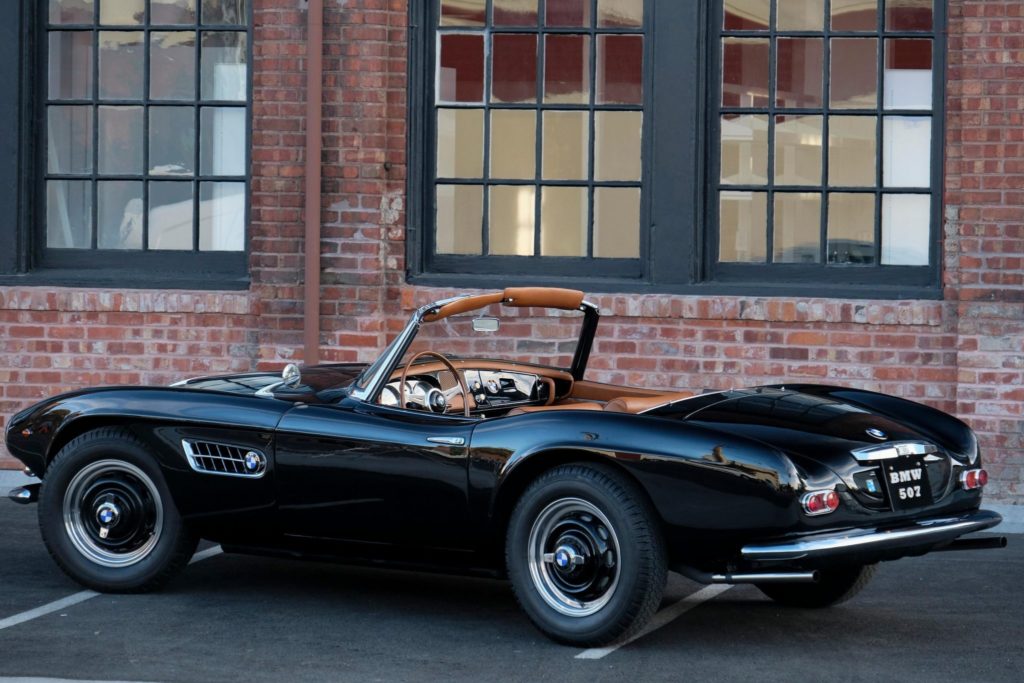
Mechanical systems have also been serviced and maintained throughout their existence, with perhaps the most notable work occurring prior to 2002, when the engine was removed, serviced, and resealed. The engine, however, is believed to be a non-original replacement installed early in the car’s life, which was stamped with the original 40087 number. BMW Classic Car Club of America president Dirk de Groen weighed in on the subject, saying the unit features updated eleven-bolt cylinder heads which were introduced in 1959.
Original or not, any example of BMW’s postwar all-aluminum pushrod V8 is a sight for sore eyes. Introduced in 1954 and said to have been inspired by the American overhead-valve designs of the era, which debuted just a few years earlier in 1949, BMW’s pushrod V8 was the first aluminum V8, and the variant used in the 507 is among the best of the bunch, thanks to a more aggressive camshaft, an advanced timing curve, polished internal surfaces, and what was then high compression of 7.8:1. Horsepower and torque increased slightly before the engine was discontinued in the mid-1960s, but the sound of the 507 is particularly unique, and this example had a new stainless steel exhaust system fitted in 2003.
Although just 252 were produced, and the model nearly translated to the end of BMW when it was new, the 507 made an indelible impression on the motoring world and BMW in the grander scheme of things. It’s an integral component of the company’s undeniable roadster heritage, which initiated before the war and continues in strong fashion today. And before they ever crossed the seven-figure price threshold, BMW paid tribute to the 507 in the form of the Z8, which is the most valuable model from BMW’s so-called modern golden-age, beginning around 2000. Although the Z8 shares significant styling and design elements with the 507, the power plant of the Z8 is the S62B50 V8 of the contemporary E39 M5. Experience the Z8, though, and you’ll likely come away remembering its sound, which is far closer to that of a midcentury V8 than the 400-horsepower twin-cam brute beneath the long aluminum hood. Like the 507, the individual nature of each Z8 means the hardtop for one chassis is unlikely to properly fit another.
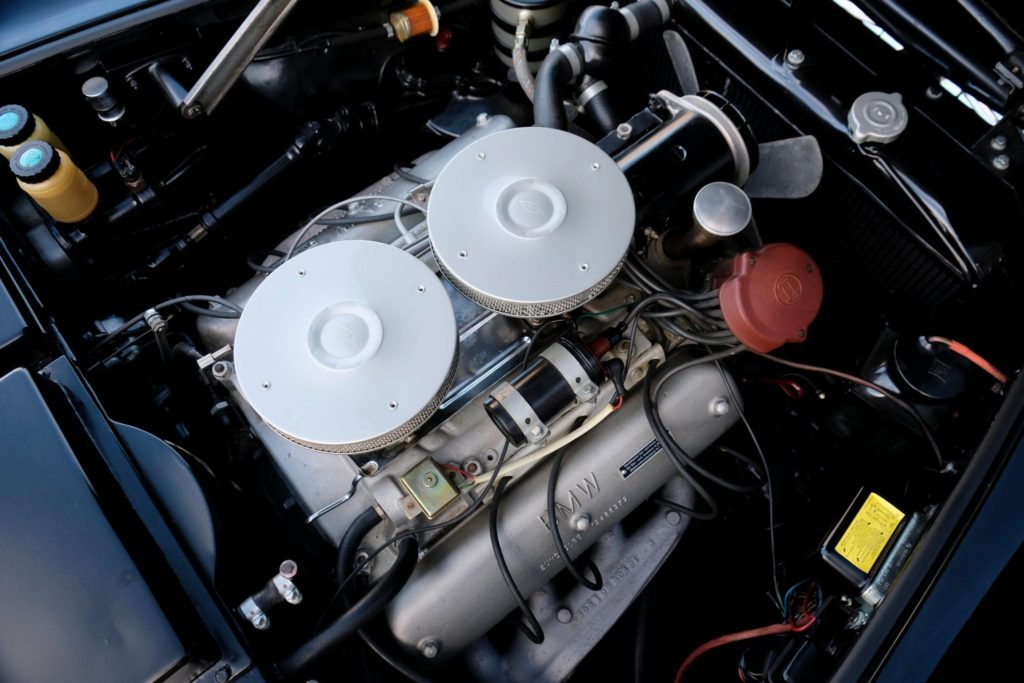
The hammer price of BMW 507 chassis number 70077 remains anyone’s guess at the time of this writing, but it will be fascinating to see how high bidding goes for what is essentially the most valuable BMW model of all time in the relatively new world of high-dollar online auctions. Bidding is already well over seven figures at the time of this writing, and the 507 has always benefited from low production numbers, as over 1,000 units of the competing 300SL were produced, and even the most common roadster examples still go for over $1,000,000 these days. But even with a rare color and strong overall quality and condition, this particular 507 has a number of qualities which may preclude it from setting a new model record, including the replacement V8 and non-original status of the paint, interior, and a few other things.
Valuing noteworthy automobile is difficult, but for something as unique and rare as a 507, perhaps the best method is to simply wait and see what the market itself says on Monday, December 7 at 11 a.m. PST, when the auction is scheduled to close.—Alex Tock
[Photos via Bring a Trailer Media LLC.]

